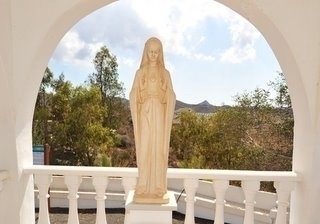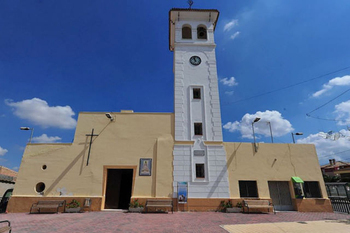

Guidelines for submitting articles to Mazarron Murcia
Hello, and thank you for choosing Mazarron Murcia to publicise your organisation’s info or event.
Mazarron Murcia is a website set up by Murcia Today specifically for residents of the urbanisation in Southwest Murcia, providing news and information on what’s happening in the local area, which is the largest English-speaking expat area in the Region of Murcia.
When submitting text to be included on Mazarron Murcia, please abide by the following guidelines so we can upload your article as swiftly as possible:
Send an email to editor@spaintodayonline.com or contact@murciatoday.com
Attach the information in a Word Document or Google Doc
Include all relevant points, including:
Who is the organisation running the event?
Where is it happening?
When?
How much does it cost?
Is it necessary to book beforehand, or can people just show up on the day?
…but try not to exceed 300 words
Also attach a photo to illustrate your article, no more than 100kb

The church of Nuestra Señora de Montserrat in La Pinilla
The main place of worship in the village of La Pinilla
La Pinilla is an outlying village in the municipality of Fuente Álamo and is located midway between Las Palas and the main road connecting Mazarrón and Alhama de Murcia.
Formerly a stop-off point on a trading route, it has an interesting history, with evidence of both Roman and Moorish activity, although much of what is visible in the town today dates from the main development of the hamlet in the 19th and 20th centuries
The same is also true of the church, which is believed to be the second to have been built in La Pinilla. It dates from the 19th century and replaced an earlier place of worship which had been built in now the now abandoned El Fortín area, the original location of the Roman and Moorish settlements.
 The tower was added in 1956 and took 5 months and 15 days to build. The local villagers paid for the construction themselves by seeking donations and holding small theatrical performances to raise funds, and those who had no money contributed by supplying manpower and labour, using their donkeys to lug the building materials required and lift them up to the workers as the tower grew in height.
The tower was added in 1956 and took 5 months and 15 days to build. The local villagers paid for the construction themselves by seeking donations and holding small theatrical performances to raise funds, and those who had no money contributed by supplying manpower and labour, using their donkeys to lug the building materials required and lift them up to the workers as the tower grew in height.
The church is built on the site of one of the greatest natural treasures in the area, a freshwater spring, and was restored in January of 2010, the roof being an exact copy of the original.
Originally the church was dedicated to the Virgen de Montserrat, but following the Spanish Civil War it was changed to the Virgen de la Luz in deference to one of the few sculptures which escaped the ravages of the war: the figure, sculpted by Sánchez Lozano, was hidden throughout the conflict by villagers in their homes.
There are also images in the church of San Antonio de Padua and San Ramón Nonatao.
Mass is held at 12.30 on Sundays
Architecture
The small church has a single Latin-crossed nave, with four sections and an adjoining chapel on the side of the epistle. One of the sections is crowned by a hexagonal dome, which in turn is topped with an iron cross.
 The main façade faces west and the wooden door is decorated with geometric patterns. A tiled image of Nuestra Señora de la Luz can be seen in the upper right-hand part, as well as a plaque commemorating the origin of the clock which is housed in the tower.
The main façade faces west and the wooden door is decorated with geometric patterns. A tiled image of Nuestra Señora de la Luz can be seen in the upper right-hand part, as well as a plaque commemorating the origin of the clock which is housed in the tower.
One of the newest additions to the village is a sculpture by Murcia artist Antonio Campillo, the figure of "A Coscaletas" presented to the village by the family of Madrid Conesa (Los Penchos) in 2011.
Click here for more information about La Pinilla and its history.
Another location linked to this church is the Vía Crucis which leads up to the Calvary overlooking the village: a nice walk and the views at the top are well worth the effort!

